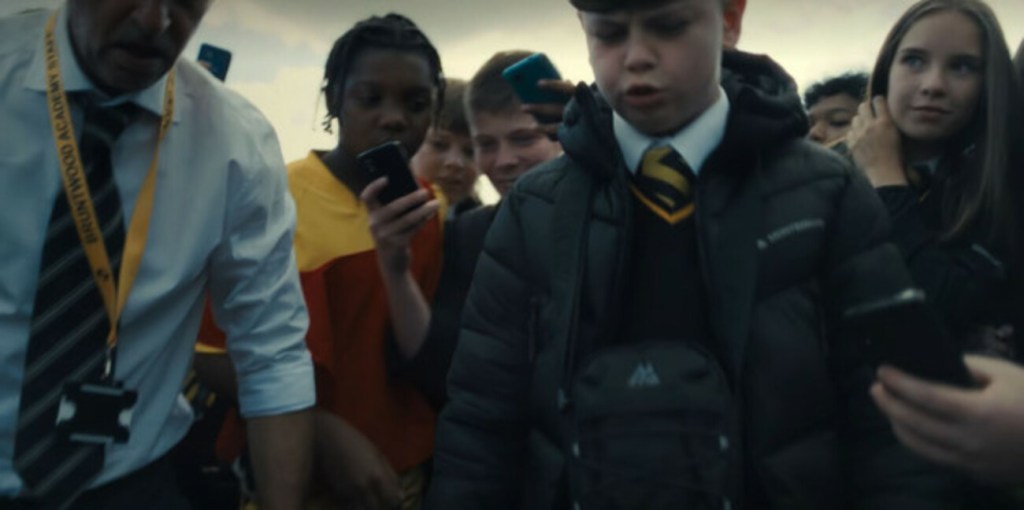I watched episode two of the Netflix series Adolescence last night.
It’s the episode that takes place at school, and it’s easy to see what’s wrong with the school depicted. It’s something I’ve often seen in real life.
The problem is that the school staff is not taking it personally.
Many illustrative examples of this follow throughout the episode as they roam the hallways and classes, but the first time it got my attention was early. One student steps into another student’s personal space, aggressively backing him against a wall, and demanding money. A teacher walks by and tells him to stop. The bully stops. The teacher continues on to their destination.
The teacher has achieved something close to nothing with this interaction, because the teacher didn’t take it personally.

It’s not nearly enough for teachers and school staff to simply tell students to follow rules in a technocratic and impersonal manner. While it is necessary to maintain basic rules, that is a very low bar for what we can expect from school staff. It cannot, on its own, engender a healthy and safe school culture.
Now, there is a certain way in which I encourage school staff to take it personally, and it is not in the I/ego sense. When it comes to their own personal ego and vulnerabilities, school staff often need help with not taking it personally. Not taking things personally, in this ego-based sense, is one of the greatest gifts one develops when becoming a mental health professional, and I strongly encourage teachers to develop this.
What we must take seriously and personally is the authority vested in us as school staff. In an effort to remain safe and secure, the students have a narrow range of options and no authority. School staff, on the other hand, have many options and are part of a whole network of adult authority.
The students are counting on us to keep their school environment safe. What you should take personally is any assumption that you might abdicate such a responsibility. -That you would look away, whether they are acting out, or in danger.
The bully demanding money is taking their aggression out on their target, which is very personal to both the bully and their target. (And to be clear, the interaction is not about money, it’s about dominance.) That personal aggression is intense and will not simply evaporate. The school staffer’s job is to get the bully to transfer their sense of conflict to the school staffer, who is standing in for the expectations of the entire school institution. You transform the conflict from existing between the bully and the target (who has no or limited options in protecting themselves), to the conflict existing between the bully and the institution of school (which has many options and a network of supporting adults).
When you are a school staffer, the authority vested in you means you are “on watch”, and the vibe about behavior that threatens a safe learning environment should be “not on my watch.”
I also encourage teachers and school staff to pay attention to not just the obvious incidents, but also to the sense of threat in the environment. This is something teachers should largely trust their personal sense about, maintaining classes that are safe-enough and also feel safe-enough. Sometimes, I see the bar set so low that nothing is considered an offense or worthy of concern unless a student is getting injured. This is a desperately low bar, and we must aim much higher than that. We can’t have a real learning environment otherwise.
More teachers and school staffers should add incredulity to their mix of available responses to school behavior. Violence is both terrible and absurd. It is an absolutely horrible way, and an absolutely ridiculous way, to address a need or challenge. I find it helpful to respond with incredulity to students who are threatening violence. In doing so, I am projecting onto them the basic requirements of civilization. Your response to threatening language may be as simple as “No, you’re not.” The vibe, which usually goes unsaid, is: The idea that you would act out violently on my watch, in the school where I work, is absurd. I take it personally that you would imagine I would stand for such a thing.
In addition to shutting down the idea of violence, we must have empathy for our students and be prepared to work with them in developing and accessing non-violent ways to address their needs and challenges.



